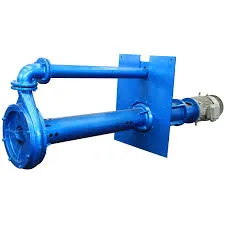Javanese
- Afrikaans
- Albanian
- Amharic
- Arabic
- Armenian
- Azerbaijani
- Basque
- Belarusian
- Bengali
- Bosnian
- Bulgarian
- Catalan
- Cebuano
- Corsican
- Croatian
- Czech
- Danish
- Dutch
- English
- Esperanto
- Estonian
- Finnish
- French
- Frisian
- Galician
- Georgian
- German
- Greek
- Gujarati
- Haitian Creole
- hausa
- hawaiian
- Hebrew
- Hindi
- Miao
- Hungarian
- Icelandic
- igbo
- Indonesian
- irish
- Italian
- Japanese
- Javanese
- Kannada
- kazakh
- Khmer
- Rwandese
- Korean
- Kurdish
- Kyrgyz
- Lao
- Latin
- Latvian
- Lithuanian
- Luxembourgish
- Macedonian
- Malgashi
- Malay
- Malayalam
- Maltese
- Maori
- Marathi
- Mongolian
- Myanmar
- Nepali
- Norwegian
- Norwegian
- Occitan
- Pashto
- Persian
- Polish
- Portuguese
- Punjabi
- Romanian
- Russian
- Samoan
- Scottish Gaelic
- Serbian
- Sesotho
- Shona
- Sindhi
- Sinhala
- Slovak
- Slovenian
- Somali
- Spanish
- Sundanese
- Swahili
- Swedish
- Tagalog
- Tajik
- Tamil
- Tatar
- Telugu
- Thai
- Turkish
- Turkmen
- Ukrainian
- Urdu
- Uighur
- Uzbek
- Vietnamese
- Welsh
- Bantu
- Yiddish
- Yoruba
- Zulu
Telephone: +86 13120555503
Email: frank@cypump.com
Dec . 03, 2024 20:23 Back to list
Comparison of Axial Flow and Mixed Flow Pumps for Optimal Performance and Efficiency
Axial vs. Mixed Flow Pumps Understanding the Differences and Applications
Pumps play a crucial role in a wide array of industries, making the understanding of their various types fundamental for engineers and technicians. Among the multitude of pump types, axial and mixed flow pumps stand out due to their unique operational characteristics and applications. This article delves into the key differences between axial and mixed flow pumps, exploring how their design impacts performance and suitability for specific tasks.
Axial Flow Pumps
Axial flow pumps, also known as propeller pumps, utilize a propeller to move fluid in a direction parallel to the pump shaft. This design allows the fluid to flow straight through the pump, making axial flow pumps particularly effective at handling large volumes of fluid with comparatively low pressure.
The main components of an axial flow pump include the impeller, which is responsible for imparting kinetic energy to the fluid, and the casing, which guides the fluid into an outlet. These pumps are typically characterized by a large diameter and a relatively short length. One of the significant advantages of axial flow pumps is their efficiency in transporting large quantities of water and similar fluids over relatively short distances, which is why they are commonly used in irrigation, drainage, and flood control applications.
However, axial flow pumps are less effective at generating high pressures. Therefore, they are not suited for applications where high lift or higher pressure is critical. Typical uses include industrial applications where fluid needs to be moved quickly and efficiently but without significant pressure buildup.
Mixed Flow Pumps
Mixed flow pumps combine features of both axial and centrifugal pumps. They offer a more versatile performance by allowing fluid to be moved at an angle to the impeller's drive shaft. This hybrid approach means that mixed flow pumps can generate both a considerable flow rate and moderate pressure, making them suitable for a broader range of applications.
The design of mixed flow pumps includes a propeller-like impeller, as well as a volute or diffuser to convert kinetic energy into pressure. This dual functionality enables mixed flow pumps to handle both low- and high-pressure scenarios effectively. They are commonly employed in water supply systems, sewage treatment plants, and industrial applications where a balance between flow rate and pressure is required.
axial vs mixed flow pump

Due to their versatility, mixed flow pumps are often preferred in situations where varying operational conditions can necessitate changes in performance. For instance, municipal water supply systems may require both the ability to move large volumes of water during peak demand periods and to generate sufficient pressure to deliver water to elevated reservoirs.
Key Differences
1. Flow Direction The primary distinction between axial and mixed flow pumps is the direction in which fluid flows. Axial flow pumps maintain a parallel flow to the shaft, while mixed flow pumps exhibit an angled flow.
2. Pressure Generation Axial flow pumps are more efficient at moving large volumes at low pressures, whereas mixed flow pumps excel at providing both decent flow rates and moderate pressures.
3. Applications Due to the differences in their operational characteristics, axial pumps are commonly found in applications such as flood control and drainage, whereas mixed flow pumps are suited for water supply and sewage treatment.
4. Design Efficiency Axial flow pumps are designed for maximum flow efficiency but can be limited by their pressure capabilities. In contrast, mixed flow pumps achieve a balance, offering moderate efficiency in both flow and pressure contexts.
Conclusion
In summary, understanding the distinctions between axial and mixed flow pumps is essential for selecting the right pump for specific applications. Axial flow pumps are ideal for large volume transfer at low pressure, while mixed flow pumps provide versatility for systems requiring a balance between flow rate and pressure. By recognizing these differences, engineers and technicians can make more informed decisions, ultimately leading to improved operational efficiency in their respective industries.
-
Horizontal Split Case Pump with GPT-4 Turbo | High Efficiency
NewsAug.01,2025
-
ISG Series Pipeline Pump - Chi Yuan Pumps | High Efficiency, Durable Design
NewsAug.01,2025
-
Advanced Flue Gas Desulfurization Pump with GPT-4 Turbo | Durable & Efficient
NewsJul.31,2025
-
ISG Series Vertical Pipeline Pump - Chi Yuan Pumps | Advanced Hydraulic Design&Durable Construction
NewsJul.31,2025
-
ISG Series Vertical Pipeline Pump - Chi Yuan Pumps | Energy Efficient & Low Noise
NewsJul.31,2025
-
pipeline pump - Chi Yuan Pumps Co., LTD.|High Efficiency&Low Noise
NewsJul.31,2025










